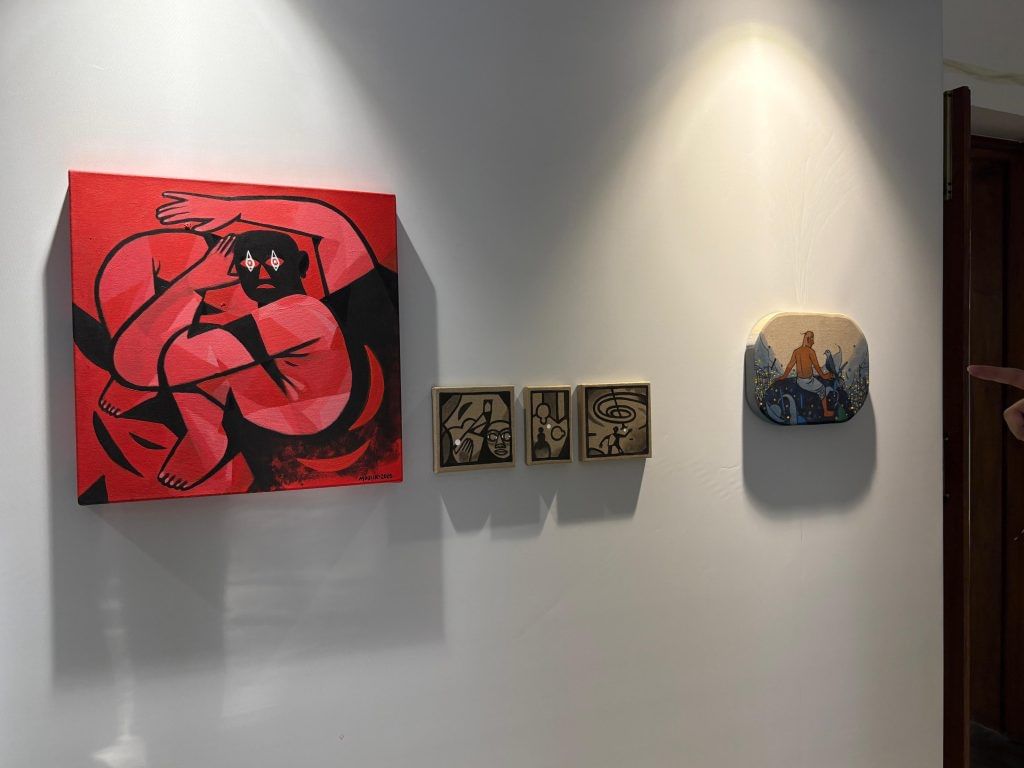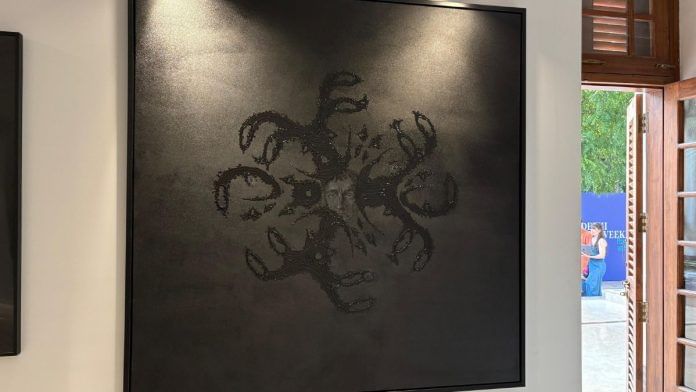New Delhi: In a cultural moment defined by overstimulation and disconnection, a group of artists turned inward—using abstraction, memory, and personal history to map the unstable terrain of identity. The result was not clarity, but a kind of emotional cartography, where the act of making art became a means of survival.
Curated by Raihan Vadra for Delhi Art Weekend 2025 at Travancore Palace on 10 October, Usual Suspects wasn’t a traditional exhibition. It was a raw, searching conversation about what it means to exist today.
Spanning painting, sculpture, photography, and mixed media, the show assembled a group of artists who didn’t offer neat answers. Instead, they opened emotional and conceptual spaces—vulnerable, confrontational, and deeply human—where questions of identity, belonging, memory, and the body took centre stage.
“These artists aren’t interested in conclusions or explanations—they want you to feel their work. Their abstractions are deliberate, meant to pull you into what they saw and felt. They capture what it means to exist in this moment, often by asking more questions than they answer,” said Chetna Khanna, a docent working with Usual Suspects.
Existence, identity, and multilayered self
At the core of Usual Suspects was the self—its shifting nature, its histories, its place in a fractured world. Each artist brings a distinct negotiation with identity, weaving nuanced stories of displacement, memory, and introspection.
Sushant Sharma, a painter based in Chandigarh, draws faces from memory. His work is shaped by a life of perpetual migration. He portrays a deep sense of rootlessness and the silent anguish of longing for home.
One of his works on display featured a face emerging from a thick field of black, tendril-like patterns that ripple across the surface. The monochrome palette and textured layers created a tension between hiding and disclosure, as if the ego is fading into chaos or being eaten by it.
The scattered eyes suggest a shattered identity—a form of existential unravelling. The picture is both frightening and highly contemplative, inviting viewers into the secret areas of the psyche, where belonging feels distant and the self is in change.
“There’s this very beautiful thing he [Sharma] said: ‘Nothing feels like home except the colour black.’ That gives you so much insight into who he is as a person and as an artist,” Khanna said.
Moving from personal identity to a broader reflection on place and inspiration, Debangshu Moulik’s work offered a reflection on place, inspiration, and the act of searching. Originally from Pune, Moulik currently lives in Delhi, and it is the city’s overlooked spaces that shape his visual language.
“His works are called Mayur Vihar because they were all made there—he stays in that part of Delhi whenever he visits,” said Chetna.

Three of Moulik’s paintings on display were visually minimal. Each was marked by a recurring white dot. It symbolises his search for inspiration—something distant, just out of reach, in a vast and empty landscape.
Together, the works showed the fragile and fragmented sense of self in a world where meaning and belonging are hard to find.
Also read: Village streets to cinema halls—Marathi film Asha captures the life of India’s caregivers
Colour, memory, reclamation
If some works grapple with fragmentation and loss, others reclaim memory and identity through joy, colour, and everyday life.
Gurdev Singh reimagines archival black-and-white pictures using colourful neon oils. His work is both personal and political, resurrecting old images and instilling new feeling into monochromatic recollections. It’s a means of reviving joy and bringing the past into the present.
This reclaiming impulse extended to the collaborative work of Duja and Aura, two creative collectives that are redefining sustainability. Their sculptural corsets, formed of leftover pottery shards, represent a circular mentality that connects fashion and art.
“They’re on a strong mission to ensure sustainability is not just a concept, but a lived practice,” said Khanna.
The exhibition also reckoned with the female body as a site of politics, resistance, and reclamation.
Gargi Chandola, an artist now pursuing a master’s degree in Pahadi Miniature Painting, approaches her work through a fiery feminist prism. Her work questions the way society regulates, defines, and polices women’s bodies.
In one piece, she subverts the masculine gaze by creating a penis entirely out of interlaced female forms—a daring, provocative image that transforms objectification into autonomy.
Chandola’s visual inversions raise problems about how the body should behave, express, or conceal itself.
As she writes on her blog: “If I don’t dress up, I’m called a slut. If I do, I’m finally considered a woman.”
Through memory, colour, material, and form, these artists were mapping identity not as a destination, but as an ongoing negotiation. In doing so, they offered something rare and necessary: not answers, but permission to ask better, deeper, more human questions.
The exhibition ended on 12 October.
(Edited by Prasanna Bachchhav)






